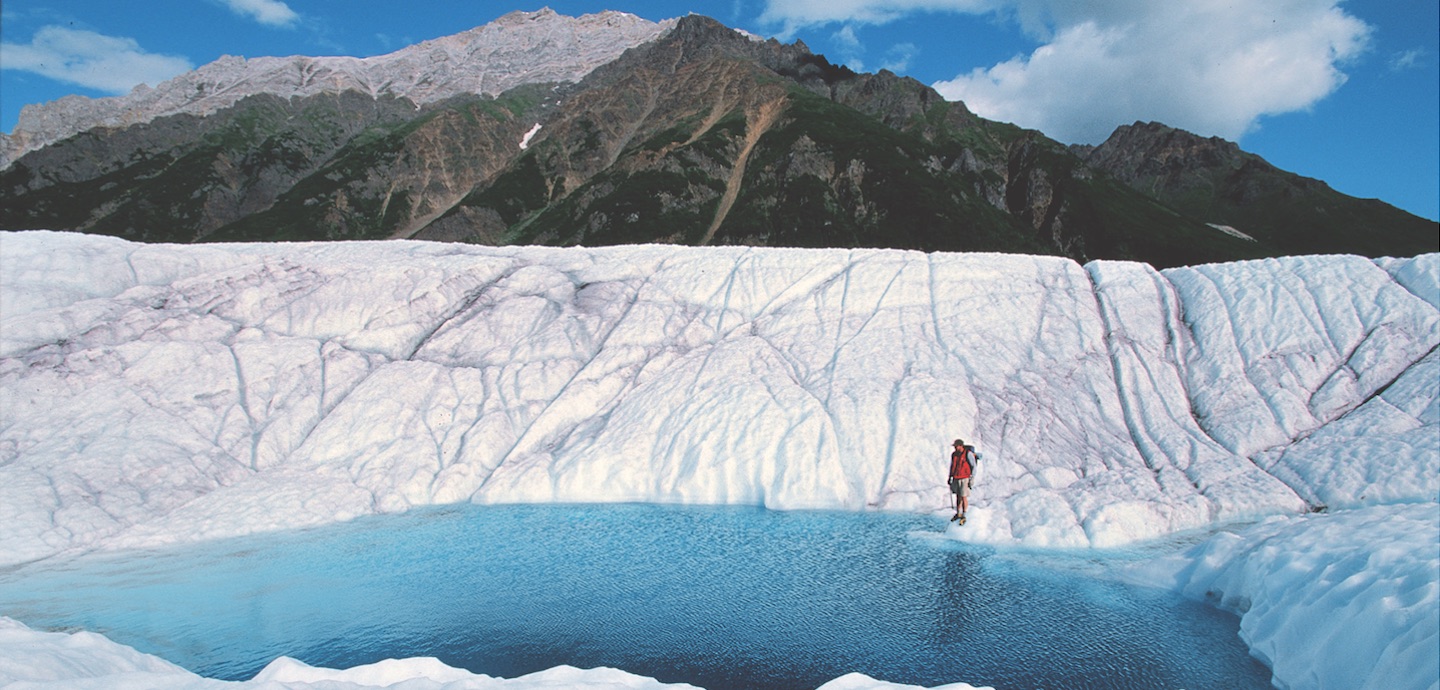JIM MCMAHON/MAPMAN®
On a sunny July day, I put on a heavy sweater, gloves, and hiking boots. That might seem like unusual gear for a summer day, but it’s not for exploring glaciers in Alaska’s Wrangell-St. Elias National Park and Preserve. An average summer day there reaches only 53˚F, and it can get much colder walking on the icy glaciers.
Wrangell-St. Elias is the U.S.’s largest national park. It’s bigger than Massachusetts and Vermont combined. Only about 20 people live in the park, which is 10 miles from the nearest town. Dall sheep and mountain goats climb the cliff sides. Bears and wolves roam the forests, and ice worms crawl around on the surface of glaciers.
But scientists are worried that this beautiful landscape is in danger. They say that climate change is heating up the planet. The warming temperatures are causing glaciers to melt faster than ever before. Melting glaciers could cause big problems for the region and around the world.

